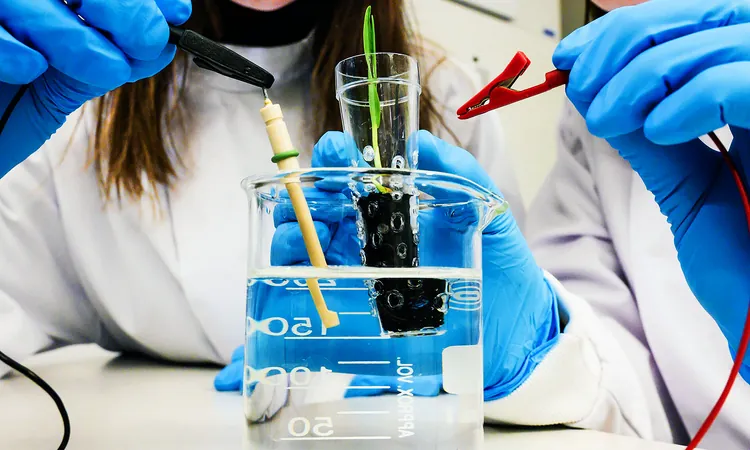
Revolutionary 'Electric Soil' Promises to Skyrocket Crop Yields by 50% in Just 15 Days!
2024-09-20
In an age where climate change and resource limitations threaten global agriculture, researchers have discovered a groundbreaking innovation: "electric soil." This novel approach utilizes electrical currents to stimulate plant growth, improving nutrient absorption and boosting overall crop health.
Harnessing Electricity for Agricultural Success
As scientists strive for more sustainable farming techniques, electric soil could be a game-changer in the quest for enhanced agricultural productivity. Eleni Stavrinidou, an esteemed associate professor at Linköping University in Sweden, leads this intriguing study that unveils remarkable findings.
The research revealed that barley seedlings exposed to electric currents increased their growth by an astounding 50% in just 15 days. This electric shock to the soil proves to be a powerful ally against the challenges presented by a growing global population and climate variations.
Urban Hydroponics Meets Electric Soil
Stavrinidou emphasizes the need for innovative cultivation methods. She envisions urban hydroponics—controlled farming systems that bypass traditional soil-based agriculture—as part of the solution. In hydroponics, plants flourish in nutrient-enriched water, significantly reducing water usage compared to conventional farming.
The fusion of hydroponics with electric soil (known as eSoil) sets the stage for unprecedented agricultural advancements. eSoil—composed of cellulose and the conductive polymer PEDOT—facilitates root stimulation that leads to rapid growth. Additionally, it serves as a more environmentally friendly alternative to common mineral wool substrates, being biodegradable and energy-efficient in production.
Shocking Results and Future Potential
The results from Stavrinidou’s experiments were astonishing. Barley seedlings cultivated in eSoil outperformed those grown without electrical stimulation, showcasing a 50% growth increase in a mere fortnight. Even more intriguing is the efficiency with which these seedlings process nitrogen, although the exact mechanisms behind this phenomenon remain to be fully understood.
Looking ahead, Stavrinidou acknowledges that while hydroponics and electric soil may not solve all global food security issues, they offer significant promise for regions with scarce arable land and adverse environmental conditions. Imagine vertical farms flourishing in urban skyscrapers or hydroponics systems thriving in arid regions, producing bountiful crops with minimal water.
The Future of Food Production
Additionally, the implications for long-term space missions are noteworthy. Efficient cultivation techniques like electric soil could prove invaluable for sustaining life beyond Earth.
As researchers continue to investigate the impacts of electrical stimulation on various crops and nutrients, we stand on the precipice of agricultural transformation. The potential of this electric soil technology could lead to advances that allow robust plants to flourish with reduced resource input, paving the way for a future where cities have direct access to fresh produce.
Stavrinidou's research is merely the beginning, and as future studies unfold, they may open new avenues for hydroponic cultivation, revolutionizing the agricultural landscape. As global food production faces unprecedented challenges, innovative strategies like electric soil might just provide the vital spark needed for sustainable agriculture on Earth—and beyond.






 Brasil (PT)
Brasil (PT)
 Canada (EN)
Canada (EN)
 Chile (ES)
Chile (ES)
 España (ES)
España (ES)
 France (FR)
France (FR)
 Hong Kong (EN)
Hong Kong (EN)
 Italia (IT)
Italia (IT)
 日本 (JA)
日本 (JA)
 Magyarország (HU)
Magyarország (HU)
 Norge (NO)
Norge (NO)
 Polska (PL)
Polska (PL)
 Schweiz (DE)
Schweiz (DE)
 Singapore (EN)
Singapore (EN)
 Sverige (SV)
Sverige (SV)
 Suomi (FI)
Suomi (FI)
 Türkiye (TR)
Türkiye (TR)